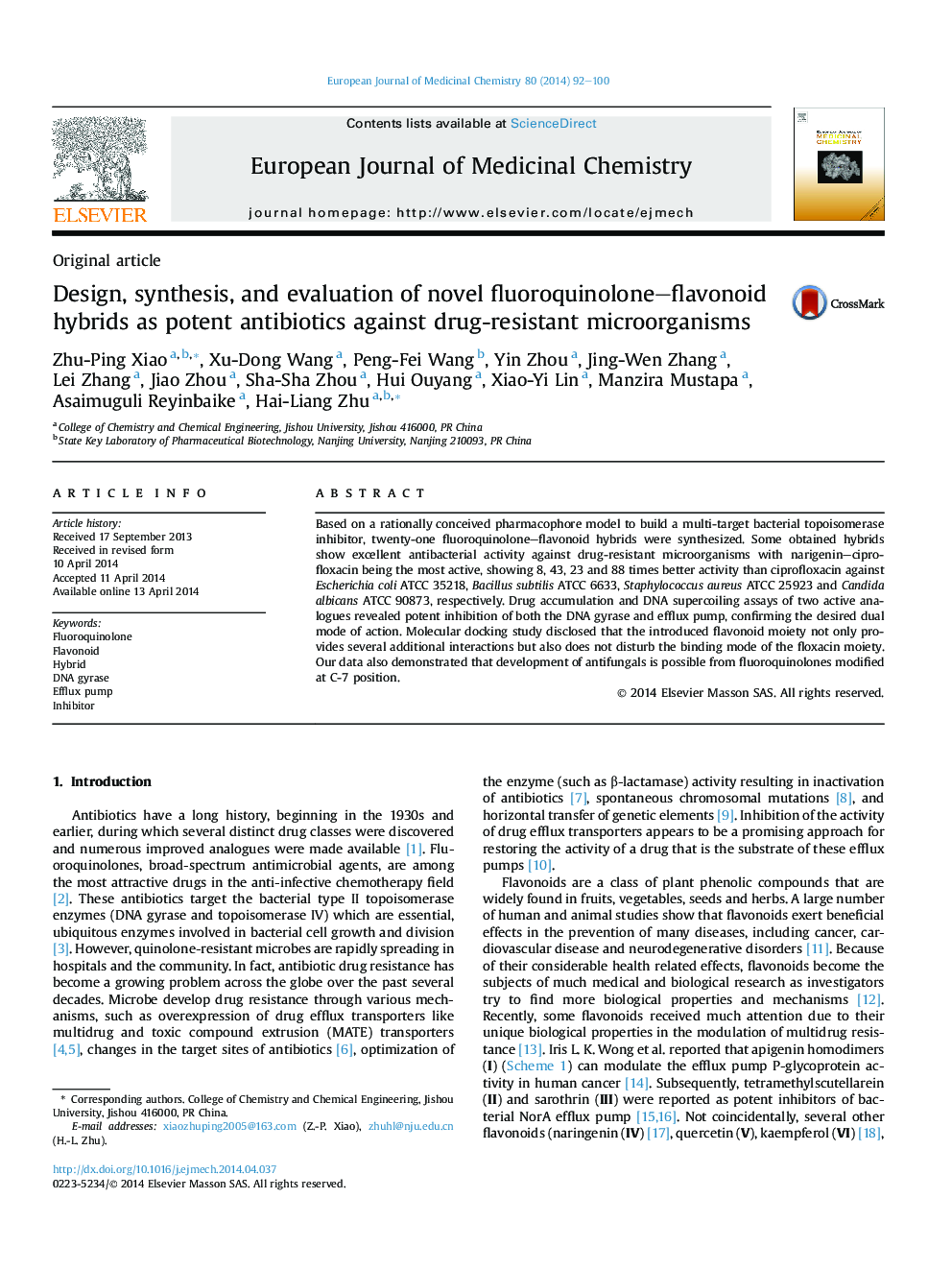| Article ID | Journal | Published Year | Pages | File Type |
|---|---|---|---|---|
| 1394091 | European Journal of Medicinal Chemistry | 2014 | 9 Pages |
•Novel Flox–Flav hybrids with excellent antibacterial activity were designed.•They show a novel dual-mode action by inhibiting both DNA gyrase and efflux pump.•These hybrids provide a new weapon against drug-resistant microorganisms.
Based on a rationally conceived pharmacophore model to build a multi-target bacterial topoisomerase inhibitor, twenty-one fluoroquinolone–flavonoid hybrids were synthesized. Some obtained hybrids show excellent antibacterial activity against drug-resistant microorganisms with narigenin–ciprofloxacin being the most active, showing 8, 43, 23 and 88 times better activity than ciprofloxacin against Escherichia coli ATCC 35218, Bacillus subtilis ATCC 6633, Staphylococcus aureus ATCC 25923 and Candida albicans ATCC 90873, respectively. Drug accumulation and DNA supercoiling assays of two active analogues revealed potent inhibition of both the DNA gyrase and efflux pump, confirming the desired dual mode of action. Molecular docking study disclosed that the introduced flavonoid moiety not only provides several additional interactions but also does not disturb the binding mode of the floxacin moiety. Our data also demonstrated that development of antifungals is possible from fluoroquinolones modified at C-7 position.
Graphical abstractThe introduced flavonoid moiety not only provides several additional interactions with DNA gyrase but also significantly increase the drug accumulation in cell, suggesting that the hybrids show a dual mode of action.Figure optionsDownload full-size imageDownload as PowerPoint slide
